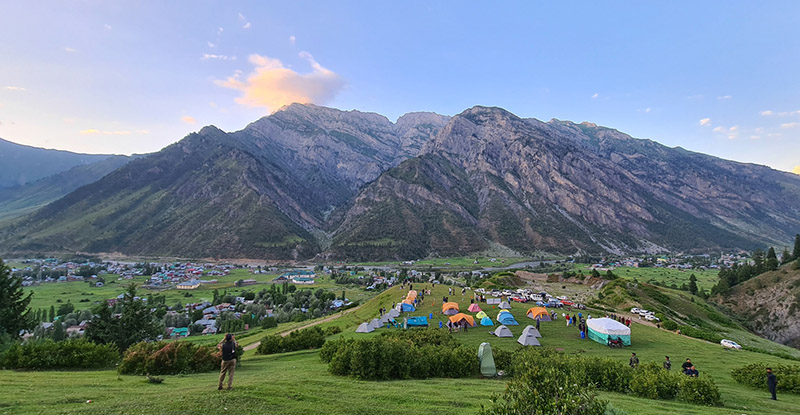The recent announcement by the Union Tourism Ministry in the Lok Sabha about the underutilization of funds earmarked for tourism initiatives in Jammu and Kashmir under the Swadesh Darshan Scheme raises significant concerns. Originally established to enhance tourism infrastructure and spur economic growth in the region, the slow rate of fund usage calls into question the effectiveness and accountability of the related authorities. This situation not only limits the potential of tourism to drive economic advancement but also casts doubt on the governance systems in place.
The Swadesh Darshan Scheme, initiated in 2014-15, aims to create theme-based tourist circuits throughout the country to foster sustainable and responsible tourism. For Jammu and Kashmir, a region rich in natural beauty and cultural treasures, the scheme offered a golden opportunity to rejuvenate its tourism sector, which has contended with numerous challenges such as political tumult, natural calamities, and the COVID-19 pandemic. Several projects were approved in 2016-17, including the development of circuits like Jammu-Srinagar-Pahalgam, Jammu-Rajouri-Shopian, and Gulmarg-Baramulla-Kupwara. These initiatives were expected to improve tourist amenities, generate employment, and invigorate local economies.
However, the data presented in the Lok Sabha reveals a troubling reality. Of the Rs 77.33 crore allocated for the Jammu-Srinagar-Pahalgam-Bhagwati Nagar-Anantnag-Salamabab Uri-Kargil-Leh circuit, only Rs 59.30 crore has been utilized. Likewise, for the Jammu-Rajouri-Shopian-Pulwama circuit, of the Rs 67.35 crore granted, just Rs 59.41 crore has been used. Similar discrepancies are evident across other projects, signifying a substantial gap between funds allocated and their actual usage. While projects like the development of tourist facilities at Mantalai and Sudhmahadev have fully utilized funds, these instances are more the exception than the rule.
The ramifications of the underutilization of funds are extensive. Primarily, it postpones essential infrastructure projects that are vital for attracting tourists and ensuring a smooth experience. Delays or incomplete projects not only dissuade potential visitors but also undermine the confidence of stakeholders, including local communities, investors, and tour operators. Furthermore, ineffective fund utilization means that the anticipated economic advantages, such as job creation and revenue increase, are not materializing.
Additionally, there is a notable absence of research evaluating the economic impact of tourism’s rise in Jammu and Kashmir. As tourism is a crucial sector contributing significantly to the region’s GDP and providing livelihoods for many, a comprehensive evaluation is necessary to understand the efficacy of implemented initiatives and to pinpoint areas demanding further focus. Such studies are essential for informed policymaking and for ensuring the benefits of tourism extend to all societal segments, especially marginalized groups.
The Union Tourism Ministry’s initiative to revamp the Swadesh Darshan Scheme into Swadesh Darshan 2.0 (SD2.0) is a positive advancement. This updated version prioritizes sustainable and responsible tourism with a focus on development centered around destinations. Including Basholi in the revamped initiative is commendable, but it must be accompanied by strong implementation and monitoring frameworks to avoid past mistakes. Given Jammu and Kashmir’s delicate ecological environment, promoting ecotourism should take precedence. The selection of Mushkoh village in Ladakh for the eco-circuit theme is an encouraging step, but more initiatives that advocate sustainable tourism practices are necessary.
Tourism has the capacity to transform Jammu and Kashmir’s economy, but this potential hinges on the efficient and effective use of allocated funds. The central government has provided substantial financial support to develop the tourism infrastructure. The underutilization of these funds within the Swadesh Darshan Scheme serves as a clarion call for all stakeholders to confront the systemic issues that impede timely project completion. By enhancing accountability, encouraging collaboration, and emphasizing sustainable tourism, Jammu and Kashmir can evolve into a premier global tourist destination that serves the interests of both residents and visitors.


Leave a Reply